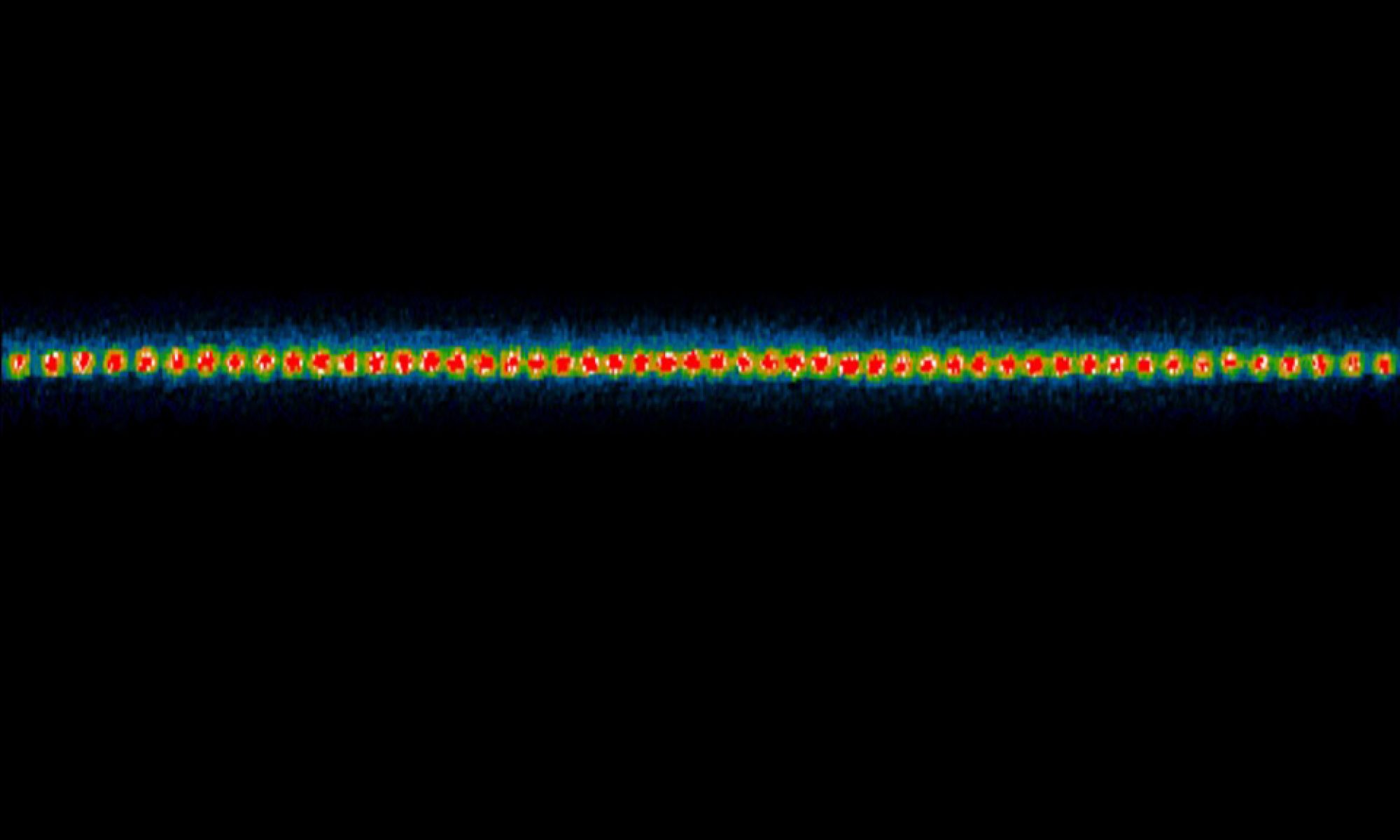Summary
We have constructed very small and optically open ion trap structures for integration with a small-volume and medium-finesse optical cavity in order to efficiently extract single photons from trapped Yb ions.
Motivation
A promising scheme for a quantum computing network – which has been experimentally demonstrated by our group – exploits the phenomenon of heralded entanglement to entangle two remote qubits. The qubits are manifested in the internal hyperfine states of two trapped ions in separate vacuum chambers.
By collecting and interfering two photons emitted from the ions, the two ions can be entangled without destroying their quantum state. This process can in principle be extended to form a network of entangled qubits separated by arbitrary distances.
One drawback to this scheme is that it is essentially probabilistic. Although it still scales in a feasible way, the entanglement event rate is currently extremely low.
Surrounding a single ion with an optical cavity should boost the fidelity and speed of the trapped ion qubit measurement, and therefore the “network speed”, via the well-known Purcell effect [1,2] for lossy cavities from quantum electrodynamics (QED).
Design
We trap a single Yb ion at the center of a small Fabry-Perot cavity, coupling the ion to the fundamental cavity mode by locking the cavity to the atomic resonance via a Pound-Drever-Hall scheme.
Ion trap and optical cavity QED systems are ideally suited as benign environments for their respective quantum systems. However, when these two systems are combined, extreme care must be taken to ensure that each system is sufficiently isolated from the other’s environment. Dielectric mirrors are usually insulators at radio frequencies typically associated with the trapping fields, which poses a serious threat to the stability of the ion trap as free charges on the dielectric can produce large offset electric fields. Conversely, the ion trap acts as an aperture in the optical cavity volume and diffractive losses may degrade the performance of the cavity.
Previously, our group developed a “double endcap” quadrupole trap geometry consisting of two needle points mounted on a stage that allowed the trap electrode gap to be continuously varied across hundreds of microns.
Our approach uses the positioning technology of the needle trap experiment to precisely control the position of a novel microtrap (pictured at the top). Each side of the trap consists of a central RF electrode surrounded by two DC electrodes, which serve as both close ground for the RF and compensating voltage sources for stray fields.
This trap is extremely thin (0.127 mm) and is designed to fit between the cavity mirrors. The ion-electrode spacing is approximately 0.1 mm, and since the cavity mirrors are 1 mm from the ion, we are ideally mitigating the effect of stray fields from the dielectric mirror surfaces. The cavity mirrors are encased in conducting sheaths that allow the application of additional compensating voltages.
Publications
“Photon Collection from a Trapped Ion-cavity System,” J. D. Sterk, L. Luo, T. A. Manning, P. Maunz, and C. Monroe, Phys. Rev. A 85, 062308 (2012).
“Protocols and Techniques for a Scalable Atom–Photon Quantum Network,” L. Luo, D. Hayes, T. A. Manning, D. N. Matsukevich, P. Maunz, S. Olmschenk, J. D. Sterk, and C. Monroe, Fortschr. Phys. 57, 1133-1152 (2009).
[1] E. M. Purcell, Phys. Rev. 69, 681 (1946)
[2] P. Milonni, The Quantum Vacuum, Academic Press (1994).
[3] N. Lindlein, R. Maiwald, H. Konermann, M. Sondermann, U. Peschel, and G. Leuchs, “A New 4π Geometry Optimized for Focusing on an Atom with a Dipole-Like Radiation Pattern,” Laser Physics 17, 927–934 (2007).

